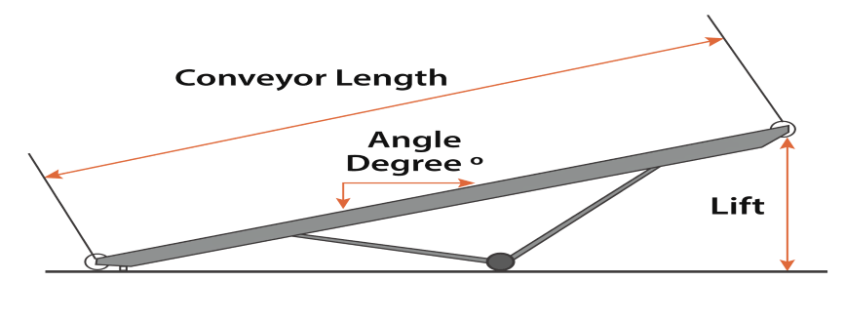How to Calculate TPH of Belt Conveyor
Understanding how to calculate tph (tonnes per hour) of belt conveyor is pivotal for industries relying on bulk material handling. TPH not only measures the capacity of conveyor belts but also serves as a critical factor in optimizing operational efficiency and throughput. Conveyor belts play an indispensable role in transporting materials across different stages of production, distribution, and processing, making their efficiency crucial for minimizing operational costs and maximizing output.This introduction aims to provide an initial overview of the significance of calculating TPH, showcasing its importance in enhancing conveyor belt operations. We delve into the role of conveyor belts in material handling, emphasizing how their capacity directly influences the overall productivity and efficiency of a facility. Additionally, we explore the various metrics and formulas integral to the calculation process. Understanding these elements is key to accurately determining the TPH of belt conveyors, thereby ensuring the seamless movement of materials and the optimization of production processes. By mastering how to calculate tph of belt conveyor, organizations can significantly improve their operational efficiency and throughput.
TPH in the Context of Conveyor Belts: A Guide on How to Calculate TPH of Belt Conveyor
Grasping the concept of TPH (tonnes per hour) and its calculate belt conveyor system. TPH is a measure of the conveyor belt’s capacity to transport material in a given hour, serving as a crucial metric for assessing efficiency and productivity. It’s not just about the volume of material moved; TPH impacts every aspect of material handling operations, from the speed of delivery to the scheduling of maintenance and the optimization of operational costs. Mastering how to calculate tph of belt conveyor ensures that businesses can maximize throughput, minimize delays, and align their operations with production demands.
The impact of different types of loads on TPH cannot be understated. Here are five examples illustrating how varied materials affect the calculation of TPH in conveyor belts:
- Bulk Density: Materials with higher bulk densities require conveyors to work harder to maintain the same TPH, affecting the energy consumed and wear on the conveyor components.
- Moisture Content: Wet or sticky materials may adhere to the belt, reducing the TPH by causing slippages or requiring slower belt speeds to prevent spillage.
- Particle Size and Shape: Large or irregularly shaped items may occupy more space on the belt or cause obstructions, potentially reducing the conveyor’s effective capacity.
- Abrasive Materials: Abrasive materials like sand or gravel can wear down the conveyor components faster, affecting the long-term capacity (TPH) due to increased downtime for maintenance.
- Fragile Materials: When handling fragile materials, the conveyor may need to operate at a reduced speed to prevent damage, directly impacting the TPH.
Understanding how these factors influence the conveyor’s capacity is pivotal when learning how to calculate tph of belt conveyor. Each material’s characteristics dictate the operational settings of the conveyor belt, emphasizing the need for precise calculations to ensure efficiency, reliability, and sustainability in material handling processes.
The Weigh Feeder TPH Calculation Formula: Mastering How to Calculate TPH of Belt Conveyor
When delving into the specifics of how to calculate tph of belt conveyor, the weigh feeder TPH calculation formula stands out as a cornerstone for accurate measurement. This formula is instrumental in determining the flow rate of material over the conveyor belt, thereby providing a clear insight into the efficiency and productivity of the material handling system.
How to calculate TPH of belt conveyor? TPH = 0.03 x Belt Speed (FPM) x material weight (lb. per cu. ft.) x Load Cross Section (sq. ft.).Each component of this formula plays a critical role:
- Belt Load (kg/m): This refers to the weight of the material per meter length of the conveyor belt. It is determined by the cross-sectional area of the material on the belt and its density.
- Belt Speed (m/min): This is the speed at which the conveyor belt moves, directly influencing how quickly material is transported over a given period.
Weigh feeder systems are designed to precisely measure the amount of material that is being conveyor belt transportation. These systems incorporate advanced sensors and scales that continuously monitor the weight of the material on the belt and the belt’s speed. By integrating this data, weigh feeder systems can accurately calculate the TPH in real-time, offering an invaluable tool for operational management.
Understanding how to calculate tph of belt conveyor using the weigh feeder TPH calculation formula allows for the optimization of conveyor belt settings according to the type of material being transported. It ensures that the conveyor system operates at its peak efficiency, reducing waste and improving throughput. This level of precision is crucial for industries where material flow rates directly impact production efficiency and profitability, making the mastery of the TPH calculation an essential skill for engineers and operators alike.
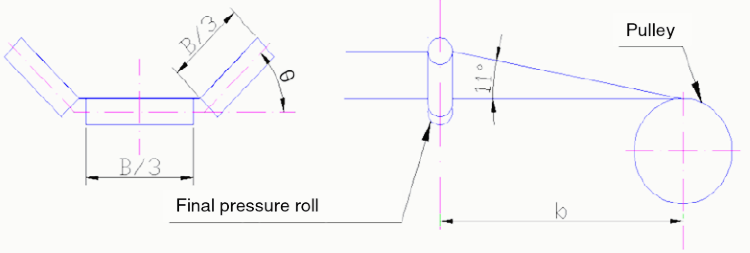
Step-by-Step Guide: Calculating TPH of a Belt Conveyor – How to Calculate TPH of Belt Conveyor
Calculating the TPH (Tonnes per Hour) of a belt conveyor is a critical process in optimizing conveyor operations for efficiency and effectiveness. This step-by-step guide delves into how to calculate tph of belt conveyor, emphasizing the importance of accurate data collection, formula application, and the utilization of digital tools for precision.
Collecting Necessary Data
The first step in how to calculate tph of belt conveyor involves gathering all necessary data, which includes measurements of the conveyor belt dimensions (length and width), belt speed, and the specific gravity or bulk density of the material being transported. Additionally, understanding the material’s characteristics, such as moisture content or particle size, can influence the calculation. Accurate data collection is crucial as it forms the foundation of the entire calculation process.
Applying the Belt Conveyor Capacity Calculation Formula
With all necessary data in hand, the next step focuses on applying the conveyor belt calculation formula. This formula is typically expressed as TPH = (Belt Speed in m/s) * (Belt Width in m) * (Material Density in kg/m³) * (Load Cross Section in m²) / 1000. This formula incorporates various factors such as belt speed, width, and the material’s density, allowing for a comprehensive calculation of the conveyor’s capacity. Adjustments may be needed based on the material’s flowability and the conveyor’s inclination.
Using Tools for Efficiency
Here are five tools to calculate the Tons Per Hour (TPH) of a belt conveyor, along with their advantages, disadvantages, and URLs:
1. Conveyor Calculation Software by Superior Industries
- URL: Superior Industries Conveyor Calculator
- Advantages:
- User-friendly interface.
- Comprehensive calculations including belt speed, material weight, and belt width.
- Provides quick and accurate results.
- Disadvantages:
- Limited to standard conveyor types.
- May not support complex or custom conveyor configurations.
2. Belt Conveyor Capacity Calculator by Rulmeca
- URL: Rulmeca Belt Conveyor Calculation
- Advantages:
- Detailed input parameters for accurate results.
- Covers a wide range of conveyor types and materials.
- Offers both theoretical and practical capacity calculations.
- Disadvantages:
- Interface can be overwhelming for new users.
- Requires detailed knowledge of conveyor components.
3. Engineering ToolBox Conveyor Capacity Calculator
- URL: Engineering ToolBox Conveyor Capacity Calculator
- Advantages:
- Simple and easy-to-use interface.
- Basic and straightforward calculations for quick estimates.
- Useful for educational purposes and initial assessments.
- Disadvantages:
- Limited to basic calculations without advanced features.
- Not suitable for complex conveyor systems.
4. FEECO International Conveyor Capacity Calculator
- URL: FEECO Conveyor Capacity Calculator
- Advantages:
- Comprehensive tool with a detailed calculation process.
- Provides additional insights into conveyor design and material handling.
- Includes options for different conveyor types and materials.
- Disadvantages:
- Requires registration to access full features.
- Can be complex for beginners without prior knowledge.
5. Metso Outotec Conveyor Capacity Calculator
- URL: Metso Outotec Conveyor Capacity Calculator
- Advantages:
- Professional-grade tool used by industry experts.
- Highly accurate with detailed input options.
- Provides additional resources and support for conveyor design.
- Disadvantages:
- May require a subscription or purchase for full access.
- Complex interface suitable for advanced users.
Each of these tools offers different features and capabilities, catering to various levels of expertise and specific needs in calculating the TPH of a belt conveyor. Users can choose the tool that best fits their requirements based on the complexity of their conveyor system and their familiarity with conveyor calculations.
How to Calculate TPH of Belt Conveyor Using a PDF Document: Mastering the Process
In the digital age, one of the most efficient ways to learn how to calculate tph of belt conveyor is by utilizing industry-standard PDF documents. These documents often contain a wealth of information, including detailed formulas, step-by-step guides, and practical examples, making them invaluable resources for engineers and operations managers alike. This section will guide you through finding and using these PDF documents to accurately calculate the TPH of belt conveyors.
The first step in mastering how to calculate tph of belt conveyor using a PDF document is to find reliable sources. Industry associations, engineering forums, and reputable equipment manufacturers often publish PDF guides on material handling and conveyor systems. Websites of engineering universities and technical colleges can also be good sources for educational materials, including PDFs on conveyor design and TPH calculation.
Once you have located a suitable PDF document, the next step is to understand the calculation formulas it presents. Most PDFs will detail the TPH calculation formula, breaking it down into understandable components such as belt speed, belt width, material bulk density, and the cross-sectional area of the material on the belt. These documents not only explain the significance of each factor but also provide instructions on how to measure or estimate these values accurately.
Utilizing a PDF document for TPH calculation typically involves the following steps:
- Review the Document: Skim through the PDF to familiarize yourself with its structure and the information it covers. Pay special attention to any sections dedicated to TPH calculation.
- Understand the Formula: Identify the specific formula or formulas provided for calculating TPH. Take note of any variables and constants, ensuring you understand each component’s role in the calculation.
- Gather Necessary Data: Before you can apply the formula, collect all the necessary data related to your conveyor system and the material it transports. This might include belt speed, belt width, and material density, among other parameters.
- Apply the Formula: With all relevant data in hand, apply it to the formula as instructed in the PDF. This might involve simple arithmetic or more complex calculations, depending on the formula’s complexity.
- Interpret the Results: Once you have calculated the TPH, use the PDF to understand what these results mean for your conveyor system’s efficiency and capacity. The document may offer insights into optimizing conveyor performance based on TPH calculations.
By following these directions and utilizing industry-standard PDFs, professionals in the material handling field can gain a comprehensive understanding of how to calculate tph of belt conveyor. This knowledge not only aids in the optimization of existing systems but also in the design and implementation of new conveyor solutions, ensuring they meet the required capacity and efficiency standards.
How to Calculate TPH of Belt Conveyor in Excel: Streamlining the Process
Using Excel to calculate TPH (tonnes per hour) of belt conveyor offers a blend of accuracy, flexibility, and efficiency. This powerful tool allows for the meticulous analysis and calculation needed to optimize conveyor belt operations. Here, we delve into how to calculate tph of belt conveyor using Excel, highlighting its advantages and providing examples of setting up an Excel spreadsheet for TPH calculations.
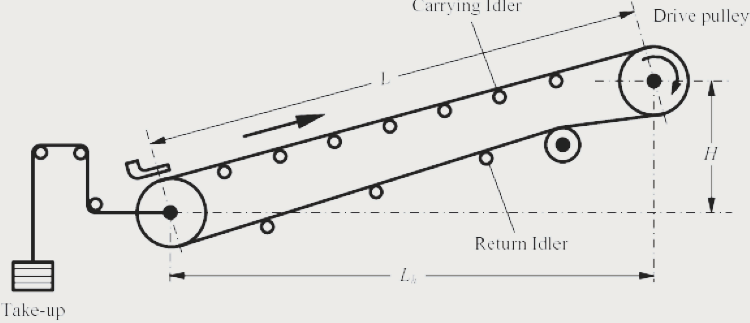
Advantages of Using Excel for TPH Calculations:
- Automated Calculations: Excel automates the calculation process, reducing the likelihood of human error. Once the formula is set up, entering your data will instantly provide you with the TPH.
- Data Organization: Excel helps in organizing data systematically. You can have all your variables and results in one place, making it easier to analyze and compare different scenarios.
- Scalability: Excel’s formulas can be easily extended to multiple data sets, making it perfect for calculating TPH across various conveyor belts or systems within a project.
- Graphical Visualization: Excel enables the creation of charts and graphs, offering a visual representation of your data and calculations. This is particularly useful for presentations or reports on conveyor efficiency and capacity.
- Easy Modification and Updating: As operational conditions change (e.g., belt speed adjustments or material density variations), Excel allows for quick updates to the data, providing real-time insights into how these changes affect TPH.
Transform your operations with our top-tier belt conveyors. Contact us now!
Setting Up an Excel Spreadsheet for TPH Calculation:
To calculate TPH in Excel, you’ll first need to set up your spreadsheet to include all necessary inputs and the TPH calculation formula. Here are three examples of how you can structure your Excel sheet:
Input Data Columns:
- A1: “Material Bulk Density (kg/m³)”
- B1: “Belt Speed (m/s)”
- C1: “Belt Width (m)”
- D1: “Load Cross Section (m²)”
- E1: “Calculated TPH”
TPH Calculation Formula:
In cell E2, you would input the formula to calculate TPH based on the inputs. Assuming you’re using a simplified formula, it might look something like this: =A2*B2*C2*D2, adjusted according to your specific calculation needs.
Automated Results:
With the formula in place, as soon as you input the values in cells A2 to D2, Excel will automatically calculate the TPH in cell E2. This setup can be replicated across multiple rows for different conveyor belts or operational scenarios, providing a comprehensive overview of your system’s performance.
Using Excel for TPH calculations not only simplifies the process of determining the efficiency and capacity of your conveyor belt systems but also enhances the accuracy and reliability of your operational planning. By following these steps to set up an Excel spreadsheet, you can easily adapt and apply the necessary calculations, ensuring optimal performance of your conveyor systems.
Conveyor Belt Capacity Calculations: Additional Methods to Determine How to Calculate TPH of Belt Conveyor
Exploring additional methods for conveyor belt capacity calculations provides a broader perspective on how to calculate TPH of belt conveyor, ensuring that operations can be optimized for efficiency and productivity. Beyond standard formulas and Excel sheets, there are other valuable tools and resources available for this purpose, such as conveyor belt thickness calculation in EXCEL, online calculators, and capacity charts. Each of these methods offers unique advantages and insights, helping to streamline the calculation process.
Belt Conveyor Capacity Calculation XLS:
The use of XLS files for belt conveyor capacity calculation is a step beyond basic Excel sheets. These specialized files often come pre-loaded with advanced formulas, charts, and even macros to facilitate more detailed and complex calculations. Their usefulness lies in their ability to handle large datasets and perform multiple calculations simultaneously, allowing for the comparison of various scenarios and the optimization of conveyor belt specifications to meet the desired TPH. Such XLS files can be customized according to specific operational needs, making them an invaluable tool for engineers and technicians.
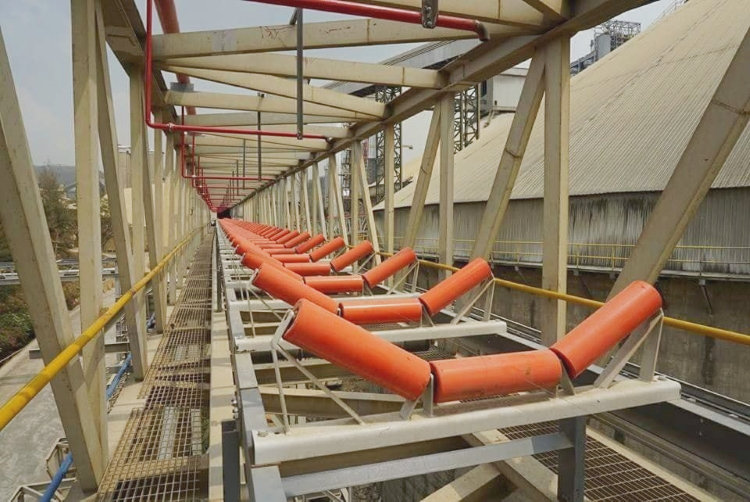
Utilizing a Conveyor Belt Capacity Calculator and Online Tools:
Online calculators and tools offer an accessible and user-friendly means to quickly estimate the capacity of conveyor belts. These tools typically require users to input key variables such as belt width, speed, and material density. They then automatically calculate the TPH based on standardized formulas. The advantage of using these online tools lies in their convenience and the immediate provision of estimates, which can be especially useful during the preliminary stages of project planning or when quick decisions are needed on-site.
Interpreting a Conveyor Belt Capacity Chart:
Conveyor belt capacity charts are another essential resource for understanding how to calculate tph of belt conveyor. These charts provide a visual representation of capacity (in TPH) across various belt widths and speeds, taking into account a standard set of material characteristics. Interpreting these charts requires a basic understanding of the operational parameters of your conveyor system. By locating the intersection point of your belt’s speed and width on the chart, you can quickly determine the expected capacity. This method is particularly useful for quick assessments and comparisons, although it may not account for all specific operational nuances.
Incorporating these additional methods into the process of calculating conveyor belt capacity enriches the toolkit available to professionals in the field. Whether through advanced XLS files, convenient online calculators, or informative capacity charts, these resources enhance the accuracy and efficiency of TPH calculations. By leveraging these tools, operations can achieve a more comprehensive understanding of their conveyor belt systems’ capabilities, leading to improved design, optimization, and operational performance.
Practical Examples: Belt Conveyor TPH Calculation – How to Calculate TPH of Belt Conveyor
To illustrate how to calculate tph of belt conveyor in a practical context, let’s walk through some examples using the standard calculation formula. These step-by-step examples aim to provide a clear understanding of applying theoretical formulas to real-world scenarios, ensuring that you can accurately calculate the throughput capacity of your conveyor systems.
Basic Calculation
Suppose we have a conveyor belt designed to transport coal with a bulk density of 800 kg/m³. The belt is 1 meter wide and travels at a speed of 2 meters per second. To calculate the TPH:
Identify the necessary data:
- Material bulk density = 800 kg/m³
- Belt speed = 2 m/s
- Belt width = 1 m
Apply the formula:
- TPH = (Belt Speed in m/s) * (Belt Width in m) * (Material Density in kg/m³) * (Load Cross Section in m²) / 1000
Assuming the load cross-section is fully utilized and is approximately equivalent to the belt width (for simplicity in this basic example), the formula simplifies to:
- TPH = 2 m/s * 1 m * 800 kg/m³ / 1000
Calculate:
- TPH = 1.6 TPH
This basic example shows how to use the formula to calculate the TPH when you have straightforward, uncomplicated data.
Including Load Cross Section
Let’s consider a more complex scenario where the conveyor belt is carrying a material with a bulk density of 1,000 kg/m³, but the material only partially fills the conveyor, utilizing 70% of the belt’s cross-sectional area. The belt is 1.5 meters wide and moves at a speed of 1.5 meters per second. The load’s cross-sectional area needs to be calculated based on the percentage of belt width utilized:
Identify the necessary data:
- Material bulk density = 1,000 kg/m³
- Belt speed = 1.5 m/s
- Belt width = 1.5 m
- Load cross-section utilization = 70%
Calculate the load’s cross-sectional area:
- Cross-sectional area = Belt width * Utilization
- Cross-sectional area = 1.5 m * 0.7 = 1.05 m²
Apply the formula:
- TPH = 1.5 m/s * 1.5 m * 1,000 kg/m³ * 1.05 m² / 1000
Calculate:
- TPH = 2.3625 TPH
This example demonstrates how to factor in the load cross-section when it does not fully utilize the belt’s width, which is a common scenario in real-world applications.
Through these examples, it’s clear that understanding how to calculate tph of belt conveyor is not just about applying a formula but also about accurately assessing and incorporating real-world variables. These practical examples serve as a guide to navigate the complexities of conveyor belt capacity calculations, enabling precise and informed decision-making for optimizing conveyor belt operations.
Belt Conveyor Design Considerations: Integrating How to Calculate TPH of Belt Conveyor
When embarking on the design or optimization of a belt conveyor system, understanding how to calculate tph of belt conveyor is not just a mathematical exercise but a crucial element that influences the entire design process. The throughput capacity (TPH) has far-reaching implications on the overall design, affecting everything from belt speed and width to the selection of the motor and the design of the conveyor’s structural components. Let’s explore how TPH affects these design considerations and the importance of accurately calculating it.
Impact of TPH on Conveyor System Design:
The TPH calculation plays a pivotal role in determining the optimal specifications for the conveyor system to meet the required material handling capacity. It affects several design aspects:
- Belt Width and Speed: The capacity of the conveyor belt (measured in TPH) directly influences the choice of belt width and speed. A higher TPH requires a wider belt or higher belt speed to accommodate the increased material load.
- Motor Power: Accurate TPH calculation is essential for selecting a motor with sufficient power to drive the conveyor belt at the required speed and carry the designated amount of material. Underestimating TPH could lead to motor overload, whereas overestimation could result in unnecessary energy consumption.
- Structural Strength: The anticipated TPH impacts the structural design of the conveyor system. Components such as rollers, frames, and supports must be designed to withstand the expected load, ensuring durability and preventing deformation or failure.
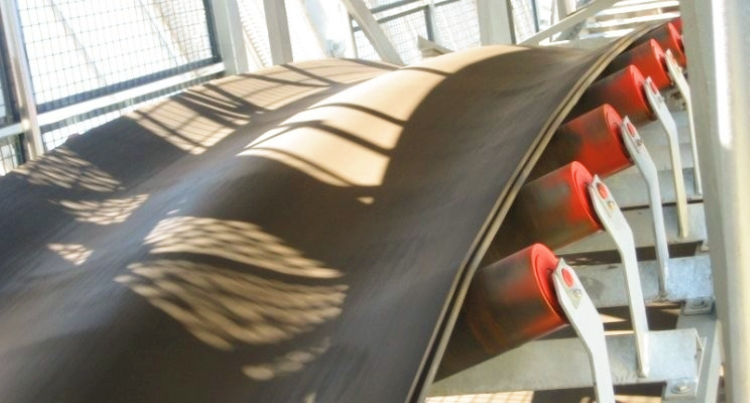
Considerations for Belt Speed and Design Implications on TPH:
Belt speed is another critical factor influenced by the TPH calculation. It has a direct relationship with the conveyor’s capacity; increasing the belt speed can raise the system’s TPH, provided the belt width and material characteristics remain constant. However, there are several considerations:
- Material Characteristics: The nature of the material being transported influences the optimal belt speed. For instance, higher speeds might cause more dust generation with dry, powdery materials or lead to material spillage for granular materials.
- Operational Efficiency: While increasing belt speed can enhance TPH, it also raises energy consumption and may require more frequent maintenance due to increased wear and tear on the conveyor components.
- Safety and Handling: Certain materials may require slower belt speeds to ensure safe handling, especially if they are hazardous or fragile. In such cases, the belt speed must be carefully balanced with the TPH requirements to design a safe and efficient conveyor system.
Incorporating the understanding of how to calculate tph of belt conveyor into the design considerations ensures that the conveyor system is tailored to the operational needs, balancing efficiency, safety, and cost-effectiveness. It underscores the interconnectedness of TPH with various design parameters, highlighting the importance of accurate calculation and thoughtful integration of these values into the conveyor design process.
Calculating Conveyor Belt Speed and Take-Up: Enhancing How to Calculate TPH of Belt Conveyor
In the complex equation of optimizing conveyor belt systems, understanding the relationship between belt speed, conveyor length, and TPH (tonnes per hour) is essential. Furthermore, the concept of take-up, which refers to the adjustment of the belt’s tension and length, plays a critical role in maintaining optimal performance. Here, we delve into these aspects, highlighting their significance in the process of how to calculate tph of belt conveyor.
Relation between Belt Speed, Conveyor Length, and TPH:
Belt speed is a crucial factor in determining a conveyor’s capacity to handle material efficiently. Essentially, the faster the belt moves, the more material it can transport over a given period, directly influencing the TPH. However, this relationship must be balanced with the conveyor length and the material characteristics to prevent issues such as material spillage or excessive wear and tear on the system.
Belt Speed:Increasing the belt speed can enhance the conveyor’s capacity (TPH), making it a vital factor in conveyor design and optimization.
Conveyor Length:The length of the conveyor also impacts the TPH, with longer conveyors requiring more power to move materials efficiently. The belt speed must be optimized according to the conveyor’s length to ensure material is transported effectively without causing bottlenecks or overloading the system.
TPH:The ultimate goal is to achieve the desired TPH, which depends on balancing the belt speed and conveyor length with the material’s characteristics and the operational requirements.

Understanding and Calculating the Take-Up of a Conveyor Belt:
Take-up is the mechanism that adjusts the length of the conveyor belt to maintain tension. Adequate tension is essential for the belt to grip the drive pulley and prevent slippage. The amount of take-up required can vary based on several factors, including the belt speed, conveyor length, and the load being transported.
Calculating Take-Up:The calculation for take-up considers the elongation of the belt due to tension, changes in temperature, and the load’s weight. It’s typically expressed as a percentage of the total conveyor length. For example, a conveyor might require a take-up length adjustment of 2% of the total conveyor length to accommodate for stretch and tension variations.
Implications for TPH:Proper take-up adjustment ensures that the conveyor belt operates smoothly and efficiently, directly impacting the TPH. Incorrect take-up can lead to belt slippage, reduced capacity, or even premature wear and failure of the conveyor components.
Integrating the understanding of belt speed, conveyor length, and take-up into the calculation of TPH allows for a more comprehensive approach to designing and optimizing conveyor belt systems. This holistic view ensures that the conveyor not only meets the desired capacity but also operates efficiently, safely, and reliably over its lifespan. By mastering how to calculate tph of belt conveyor with these factors in mind, engineers and operators can significantly improve the performance and productivity of their conveyor systems.
How to Determine the TPH of Material Running Across the Conveyor Belt?
Knowing the tons per hour (TPH) that a conveyor belt can handle is crucial for optimizing operations, ensuring efficiency, and preventing equipment overload. The TPH reflects the mass flow rate of material that is transported by the conveyor over a given time. To accurately determine this measure, one must go through a series of calculations, considering various aspects of the conveyor system and the material it carries. Below, we outline the main points necessary to calculate the TPH of a conveyor belt.

Calculate the Belt Speed
The conveyor belt’s speed is one of the primary factors in determining its capacity. To calculate the TPH, initially, you need to measure the belt’s speed. This is often expressed in feet per minute or meters per minute. The TPH formula heavily relies on the speed at which the belt moves because the faster the belt moves, the more material it can carry over a specific time frame. You can find the belt speed specified in the conveyor’s technical documentation or measure it directly on-site.
Measure the Belt’s Cross-Sectional Load Area
The cross-sectional area on the conveyor belt that the material occupies is directly proportionate to the conveyor’s material flow rate. To calculate this area, measure the width and height of the material as it lies on the belt. This can be complex, depending on the consistency of the material—whether it’s a solid sheet, a uniformly distributed load, or a more irregular, particulate matter. With the cross-sectional area data in hand, you can calculate the volume of the material conveyed per unit time, which will later be used in conjunction with other parameters to determine the TPH.
Incorporate Material Density into Calculations
Finally, the density of the material being conveyed is essential to convert volume into weight, which directly relates to the belt capacity belt utilization factor formula. Density is typically provided in units of weight per volume, such as tons per cubic meter or pounds per cubic foot. Once you’ve confirmed the material density, multiply this by the volume of material (which can be taken from the belt speed and cross-sectional area calculations) to find the weight of material passing over the conveyor belt per unit time. Consolidating these figures will render the conveyor system’s TPH, a vital metric for assessing performance and operational capacity.
By following these outlined steps, businesses can determine the tons per hour of their conveyor systems and ensure that they are used within their designed capacity limits, thus promoting efficiency and longevity of the conveyor system.
How does Belt Conveyor for Bulk Materials calculate TPH?
Belt conveyors are essential in the transport of bulk materials in many industrial contexts, from mining to packaging. Efficiently determining the TPH throughput per hour that a belt conveyor for bulk materials can handle is crucial for operational optimization and equipment selection. The calculation of TPH for bulk materials involves a step-by-step process that takes into account several important factors. Below, this process is broken down into key components, each described in detail for clarity and understanding.
Consideration of Bulk Material Characteristics
The first step in calculating the TPH of bulk materials on a conveyor belt involves understanding and categorizing the material characteristics. This includes:
- Material Density: The weight of the material per unit volume, which influences how much tonnage can be transported.
- Flowability: This affects how materials load and unload on the conveyor, impacting the potential volume that can be moved.
- Abrasiveness and Corrosiveness: These characteristics determine the type of belt material needed, which may affect the conveyor belt’s efficiency and operational speed.
Understanding these characteristics allows for a more accurate calculation of the conveyor’s capacity by adjusting for factors that could slow down the process or require more power to move the same amount of material.
Measurement of the Conveyor Belt Speed
The speed at which the conveyor belt moves is directly linked to its capacity. To calculate TPH, one needs to accurately measure or obtain the belt speed. The conveyor belt’s speed is usually given in feet per minute (fpm) or meters per minute (mpm). The formula for TPH needs this speed to estimate how quickly material is being transported. High-speed conveyors can move more material, increasing the TPH, but this might need adjustments based on material characteristics for optimal performance.
Calculation of the Load Cross-Sectional Area
The amount of material that can fit on the conveyor belt, termed as the load’s cross-sectional area, plays a pivotal role in calculating TPH. This calculation involves the following steps:
- Measuring the width of the conveyor belt to understand how wide the material layer can be.
- Determining the height of the material layer, which may require understanding the nature of the material and how it piles up.
- Multiplying the width by the height gives the cross-sectional area, which, when combined with belt speed, offers a volume per time unit that the conveyor moves.
Finally, multiplying the volume per time unit by the material density converts this volume to a weight, providing the TPH of the belt conveyor for bulk materials. It’s essential to repeat these measurements under different operating conditions to ensure accuracy over a range of operational scenarios.
Calculating the TPH of belt conveyors for bulk materials involves a detailed understanding of material properties, conveyor belt speed, and the physical dimensions of the material load. By meticulously considering these factors, businesses can accurately determine their conveyor systems’ capacity, ensuring they are adequately matched to the operational requirements and material characteristics.
Boost performance with our premium belt conveyors. Act fast and connect!
FAQs About How to Calculate TPH of Belt Conveyor
Calculating the load on a conveyor belt is essential for designing a system that can efficiently handle the required volume of material. The load is determined by the mass or volume of material that can be transported per unit of time, usually measured in tonnes per hour (TPH) for mass or cubic meters per hour for volume. To calculate the conveyor belt load, you first need to know the bulk density of the material being handled, which is the weight of the material per unit volume. Then, you calculate the cross-sectional area of the material on the belt, considering the belt’s width and the material’s surcharge angle. The formula for calculating the conveyor belt load (in TPH) can be simplified as: Load (TPH) = (Belt Speed in m/s) * (Belt Width in m) * (Material Density in kg/m³) * (Cross-sectional area in m²) / 1000. This calculation helps in selecting a conveyor belt that can handle the intended load, ensuring efficient and effective material transport.
The belt speed of a conveyor system is crucial for calculating the conveyor’s capacity and ensuring that it meets the necessary production requirements. Belt speed is typically measured in meters per second (m/s) or feet per minute (ft/min). The formula for calculating belt speed is: Belt Speed (m/s) = (π * D * N) / 60, where π (pi) is a constant (approximately 3.14159), D is the diameter of the pulley (in meters), and N is the rotation speed of the pulley (in revolutions per minute or RPM). This formula gives you the linear speed of the belt, enabling you to determine how fast the material is being moved. Understanding the belt speed is critical for optimizing the conveyor’s efficiency, as it affects the throughput rate and the selection of other conveyor components.
Calculating the total power required by a conveyor belt involves considering several factors, including the belt speed, the load being carried, the length of the conveyor, and the friction between the belt and the rollers. The total power (P) needed for a conveyor belt can be calculated using the formula: P = (F * V) / 1000, where P is the power in kilowatts (kW), F is the total force exerted by the belt (in Newtons), which includes the gravitational force of the load and the frictional force, and V is the belt speed in meters per second (m/s). This calculation helps in selecting a motor with adequate power to operate the conveyor system efficiently. It is crucial for ensuring that the conveyor operates smoothly without overloading the motor, which could lead to system failure.
The term “315 3” in the context of conveyor belts refers to the belt’s strength and the number of layers of fabric or carcass construction. The number “315” denotes the belt’s nominal tensile strength in kilonewtons per meter of width (kN/m), indicating the maximum operating tension the belt can withstand. The “3” indicates the number of layers of fabric (plies) embedded within the belt’s rubber to provide structural strength. This specification is crucial for determining the durability and load-bearing capacity of the conveyor belt. Choosing the correct belt strength and ply count is essential for ensuring the conveyor system can handle the intended load without risk of elongation, tearing, or failure, contributing to the overall reliability and efficiency of the conveyor system.
TPH stands for “tons per hour,” a unit used to measure the capacity of conveyor belts. This measurement indicates how much material the conveyor can move over a given period, helping businesses to gauge the efficiency and throughput of their conveyor systems. By knowing the TPH, companies can align their production processes with the output capability of the conveyor, optimizing both operational speed and material handling.
Calculating the capacity of a conveyor involves multiple factors, including the belt speed, the belt width, the material density, and the cross-sectional area of the material load on the belt. Generally, the formula to determine conveyor capacity is: capacity (in cubic meters per hour) = belt speed (in meters per minute) * loading cross-sectional area (in square meters) * material density (in kilograms per cubic meter), adjusted by a conversion factor to align units. Accurate calculation ensures that the conveyor runs at optimal efficiency without overloading, which can lead to wear and breakdowns.
The carrying capacity of a belt conveyor refers to the maximum load that the conveyor can transport over a specific period. It is determined by factors such as belt width, belt speed, roller configuration, and material density. Engineers design belt conveyors to carry vast amounts of weight, from small, granular materials to larger, irregular sized items. Knowing the carrying capacity is essential for selecting the right conveyor for specific industrial tasks and ensuring it operates within safe loading conditions to prevent mechanical failures or safety hazards.
The counterweight in a conveyor belt balances the belt tension, valuable for the smooth operation and longevity of the conveyor system. To calculate the necessary counterweight, you first need to determine the maximum tension that the belt experiences. This calculation typically includes the belt’s length, the load it carries, its speed, and any additional forces acting on the belt, such as those from inclines or declines. The counterweight is usually set at a value that can effectively balance these forces, often calculated as a percentage of the maximum tension. Ensuring proper counterweight helps maintain optimal belt tension, reducing slippage and wear.
Last Updated on June 6, 2024 by Jordan Smith
Jordan Smith, a seasoned professional with over 20 years of experience in the conveyor system industry. Jordan’s expertise lies in providing comprehensive solutions for conveyor rollers, belts, and accessories, catering to a wide range of industrial needs. From initial design and configuration to installation and meticulous troubleshooting, Jordan is adept at handling all aspects of conveyor system management. Whether you’re looking to upgrade your production line with efficient conveyor belts, require custom conveyor rollers for specific operations, or need expert advice on selecting the right conveyor accessories for your facility, Jordan is your reliable consultant. For any inquiries or assistance with conveyor system optimization, Jordan is available to share his wealth of knowledge and experience. Feel free to reach out at any time for professional guidance on all matters related to conveyor rollers, belts, and accessories.

